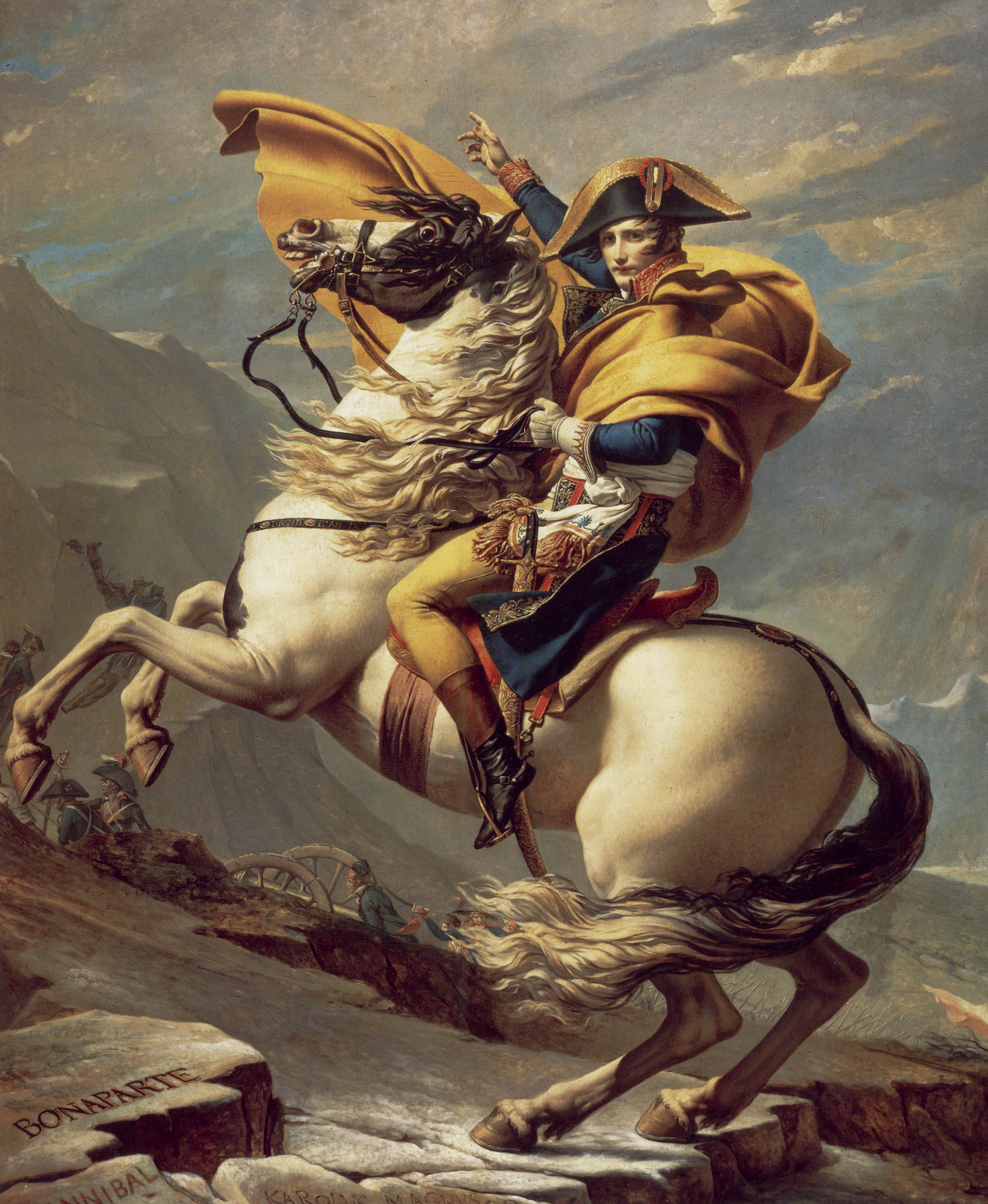
Who was the artist Jacques-Louis David?
Jacques-Louis David was a renowned painter neoclassical Frenchman who lived from 1748 to 1825, considered one of the main artists of the 18th century and one of the most important in the history of Western art. Jacques-Louis David played a significant role in history painting during the French Revolution and the Napoleonic period.
Born in Paris, he studied at the Royal Academy of Painting and Sculpture, where he developed his technical and academic skills. He was deeply influenced by the masters of classical art, such as Raphael, and by the neoclassical ideals of balance, harmony and proportion.
Jacques-Louis David gained recognition for his historical paintings that depicted events from ancient and contemporary history. His style was characterized by highly detailed figures, clear compositions and an idealized approach. Among his most famous works are "The Death of Marat" (1793), "The Oath of the Horatii" (1784) and "The Coronation of Napoleon" (1807).
During the French Revolution, Jacques-Louis David became actively involved in political events and became a member of the Committee of Public Safety, a powerful position. He fervently supported the Revolution and created several works that celebrated its leaders and principles.
However, after the fall of Napoleon, Jacques-Louis David was exiled due to his connections with the regime. He spent his final years in Brussels, where he continued to paint and teach until his death in 1825. Jacques-Louis David's legacy lies in the influence he had on French neoclassicism and the lasting impact of his works on the art world.
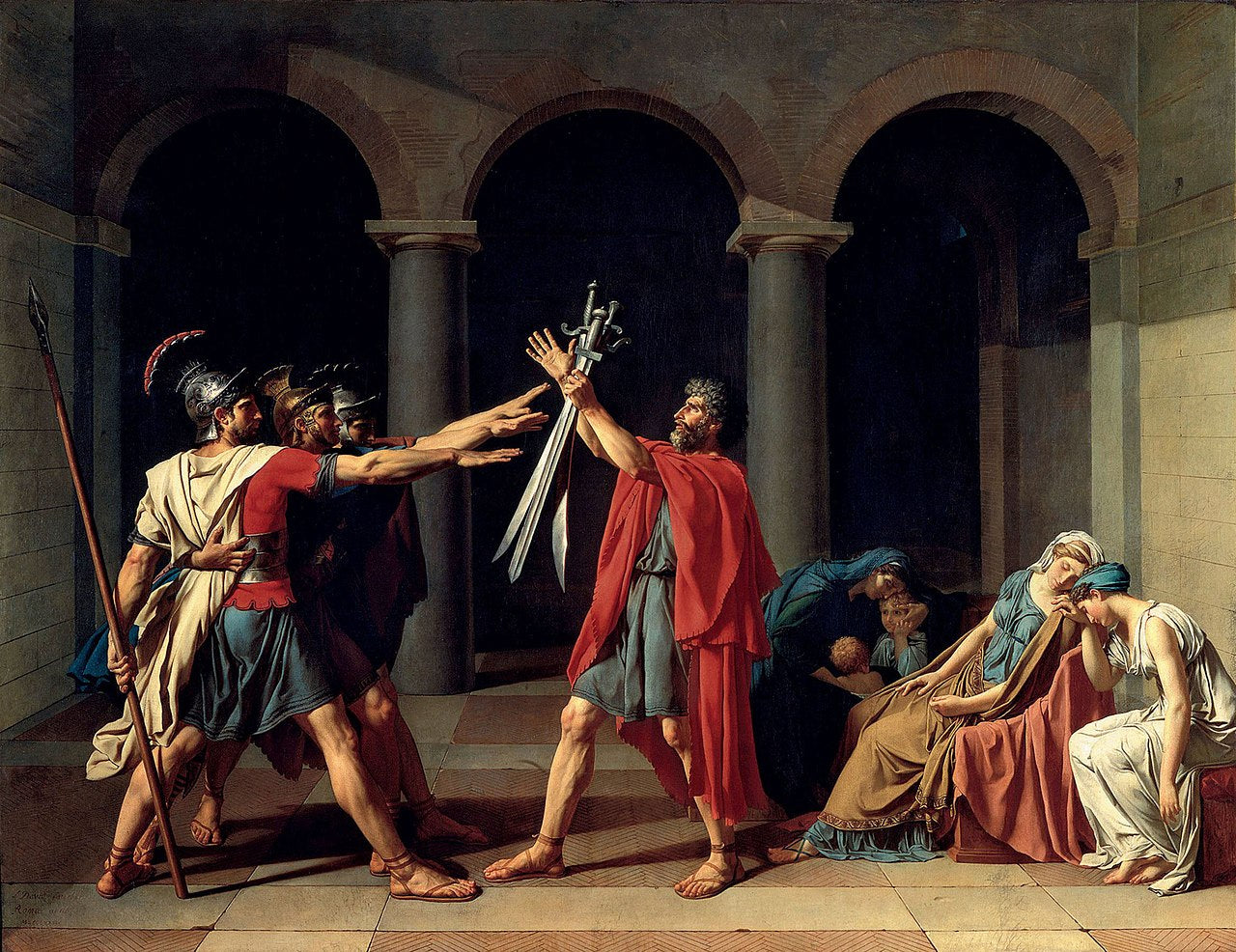
What are the characteristics of Jacques-Louis David's works?
Idealization: Jacques-Louis David idealized his figures and scenes, seeking to portray ideal beauty and heroism. His representations were stylized and often idealized, with balanced proportions and noble, sculpted figures.
Balanced composition: His works were carefully organized into balanced, often symmetrical compositions. It employed a precise arrangement of visual elements to create a sense of order and harmony.
Light and bright colors: Jacques-Louis David used a bright, vibrant color palette, often with a striking use of contrasts of light and shadow to create a dramatic effect and bring his paintings to life.
Historical narrative: His works often portrayed historical, mythological or literary events, with an interest in transmitting a clear and understandable narrative to the viewer. He strived to recreate historical scenes with precision and minute detail.
Expression of emotion: Although the neoclassical style is often associated with serenity and reason, Jacques-Louis David was also able to convey emotion and drama in his paintings, especially in moments of tension or tragedy.
Influence of classical antiquity: Jacques-Louis David was an admirer of classical Greco-Roman art and often incorporated elements of that aesthetic into his works. He valued the symmetry, proportion and idealized representation found in the works of Renaissance and Baroque masters.

What are Jacques-Louis David's three best-known works?
"The Oath of the Horatii" (1784): This painting is one of the landmarks of French neoclassicism. It portrays a moment in Ancient Rome, when the three Horace brothers swear an oath of loyalty to Rome before a battle. The painting is known for its symmetrical and dramatic composition, in addition to its idealized representation of figures and its emotional appeal.
"The Death of Marat" (1793): This is one of Jacques-Louis David's most iconic works. It depicts the scene of the assassination of Jean-Paul Marat, a political leader of the French Revolution. Marat is depicted dead in his bathtub, with the light falling on his figure to highlight him. The painting is famous for its dramatic and emotional representation.
"The Coronation of Napoleon" (1807): This is a monumental painting depicting the coronation of Napoleon Bonaparte as Emperor of France at Notre-Dame Cathedral in Paris in 1804. The work captures the splendor of the event, with Napoleon and Empress Joséphine at the center, surrounded by important figures of the era. The painting is known for its grandeur, minute details and the way it celebrates the figure of Napoleon.
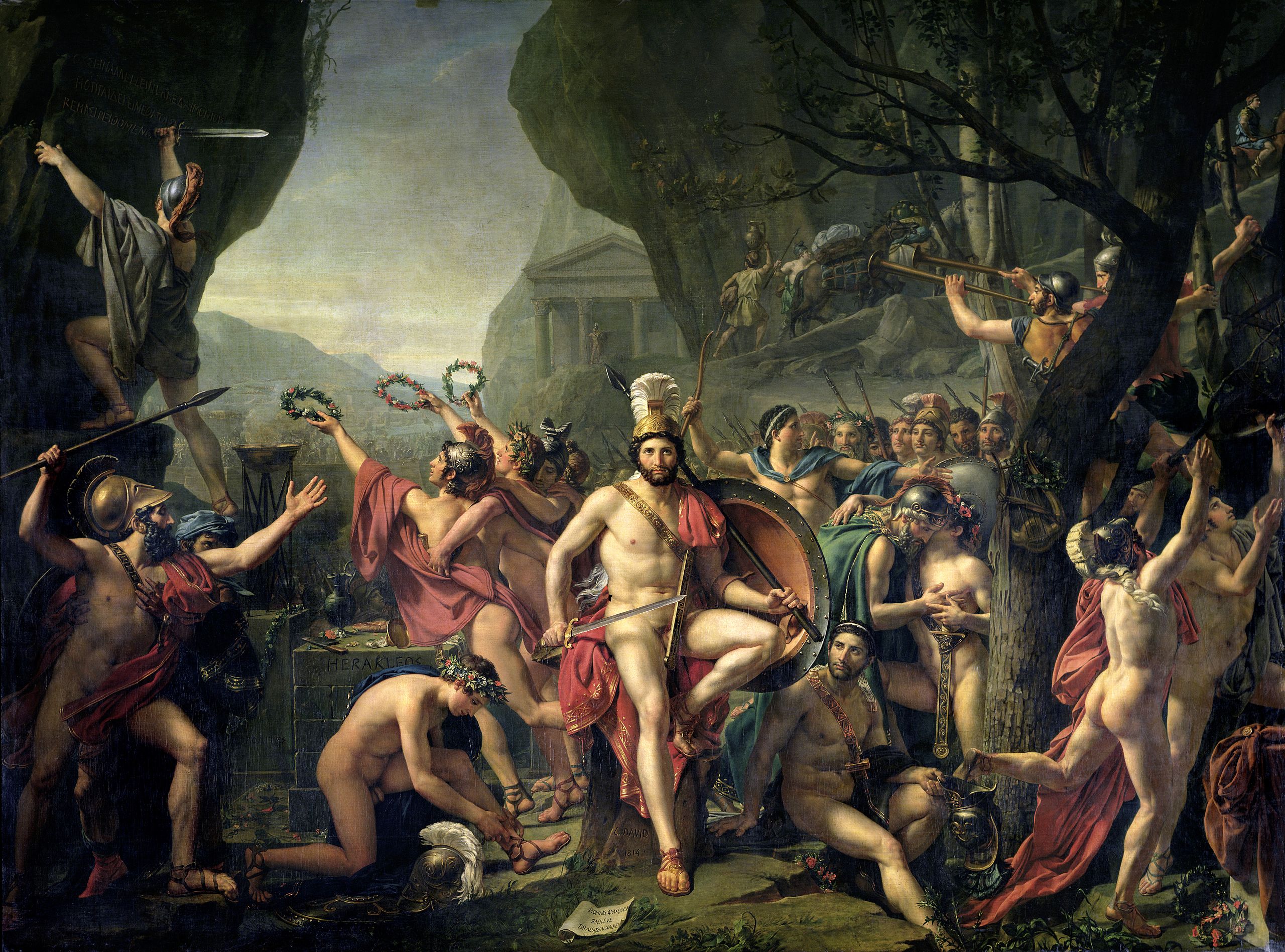
Did Jacques-Louis David support Napoleon Bonaparte?
Jacques-Louis David was an ardent supporter of Napoleon Bonaparte. During the Napoleonic period, Jacques-Louis David became the official painter of Napoleon and his regime. He portrayed Napoleon in several important works, including "The Coronation of Napoleon" (1807) and "Napoleon Crossing the Alps" (1801-1805).
Jacques-Louis David was an admirer of Napoleon and shared his political ideals. He believed in the French leader's redemptive mission and saw Napoleon's rise as an opportunity to establish a new order in France and Europe. Jacques-Louis David painted many historical and allegorical scenes that glorified Napoleon's rule and the values of the French Revolution.
In addition to his paintings, Jacques-Louis David also played an active role in politics as a member of the Napoleonic government. He was elected to the Senate in 1803 and became a member of the Committee of Public Safety in 1793 during the period of Terror, playing an important role in revolutionary politics.
After the fall of Napoleon in 1815, Jacques-Louis David was exiled and faced political persecution due to his association with the regime. However, his support for Napoleon and his idealized depiction of the French leader left a lasting impact on his work and art history.
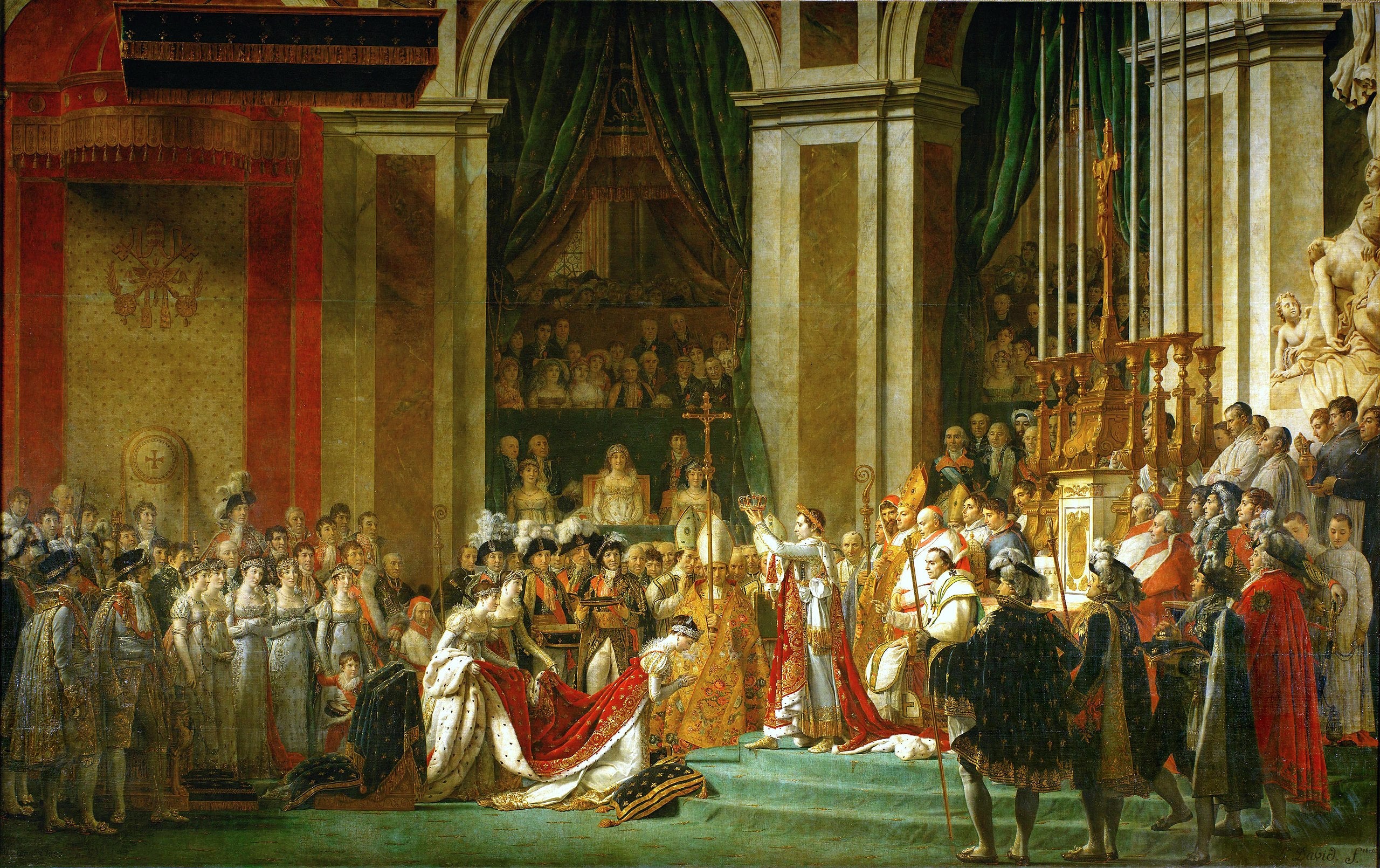
What happened to Jacques-Louis David?
After the fall of Napoleon Bonaparte in 1815, Jacques-Louis David found himself in a complicated political position due to his close association with the Napoleonic regime. He was accused of treason and fled to Belgium in 1816 to escape political persecution in France.
In Brussels, Jacques-Louis David continued to paint and teach. He received many students and maintained his influence in the art world. During his exile, Jacques-Louis David faced financial difficulties and had to deal with the loss of prestige that accompanied his removal from the French art scene.
Jacques-Louis David died on December 29, 1825, in Brussels, at the age of 77. His death marked the end of an era for neoclassical art, but his legacy continued to influence later generations of artists. His works are still appreciated and studied as notable examples of the neoclassical style and the portrayal of history and politics through art.
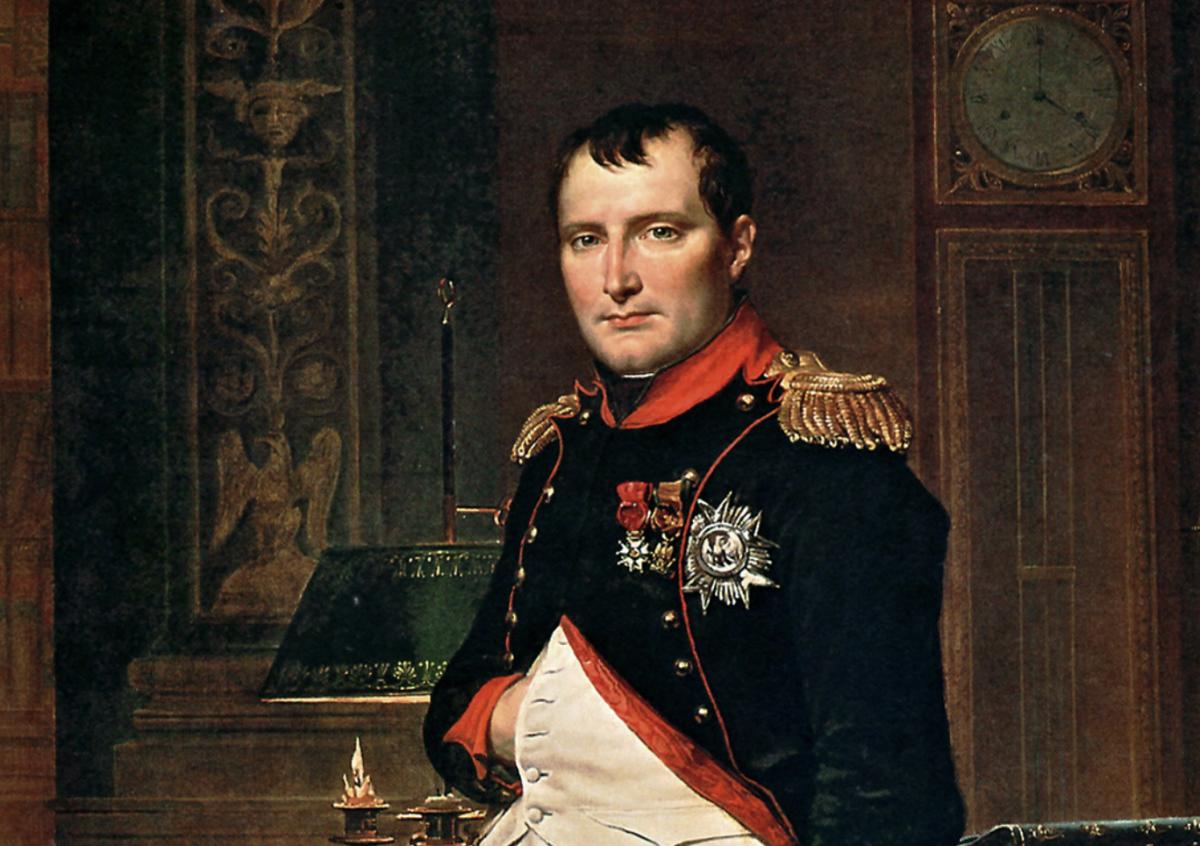
What is Jacques-Louis David's legacy?
Neoclassicism: Jacques-Louis David was one of the main exponents of neoclassicism, an artistic movement that was inspired by classical Greco-Roman art. His stylistic approach, balanced compositions and idealization of figures profoundly influenced the development of this artistic style. Historical portrait: His historical paintings are marked by a clear narrative and careful representation of historical events and characters. It helped establish the genre of historical portraiture as a significant and influential art form. Political painting: Jacques-Louis David played an active role in political events in France, particularly during the French Revolution and the Napoleonic period. His political participation and idealized depiction of Napoleon and other political leaders left a lasting impact on the way art can be used to convey political messages. International influence: Jacques-Louis David's work was not just limited to France, as it had a significant impact across Europe and beyond. His ideals and techniques were adopted by artists in different countries, influencing the development of neoclassical painting throughout Europe.
